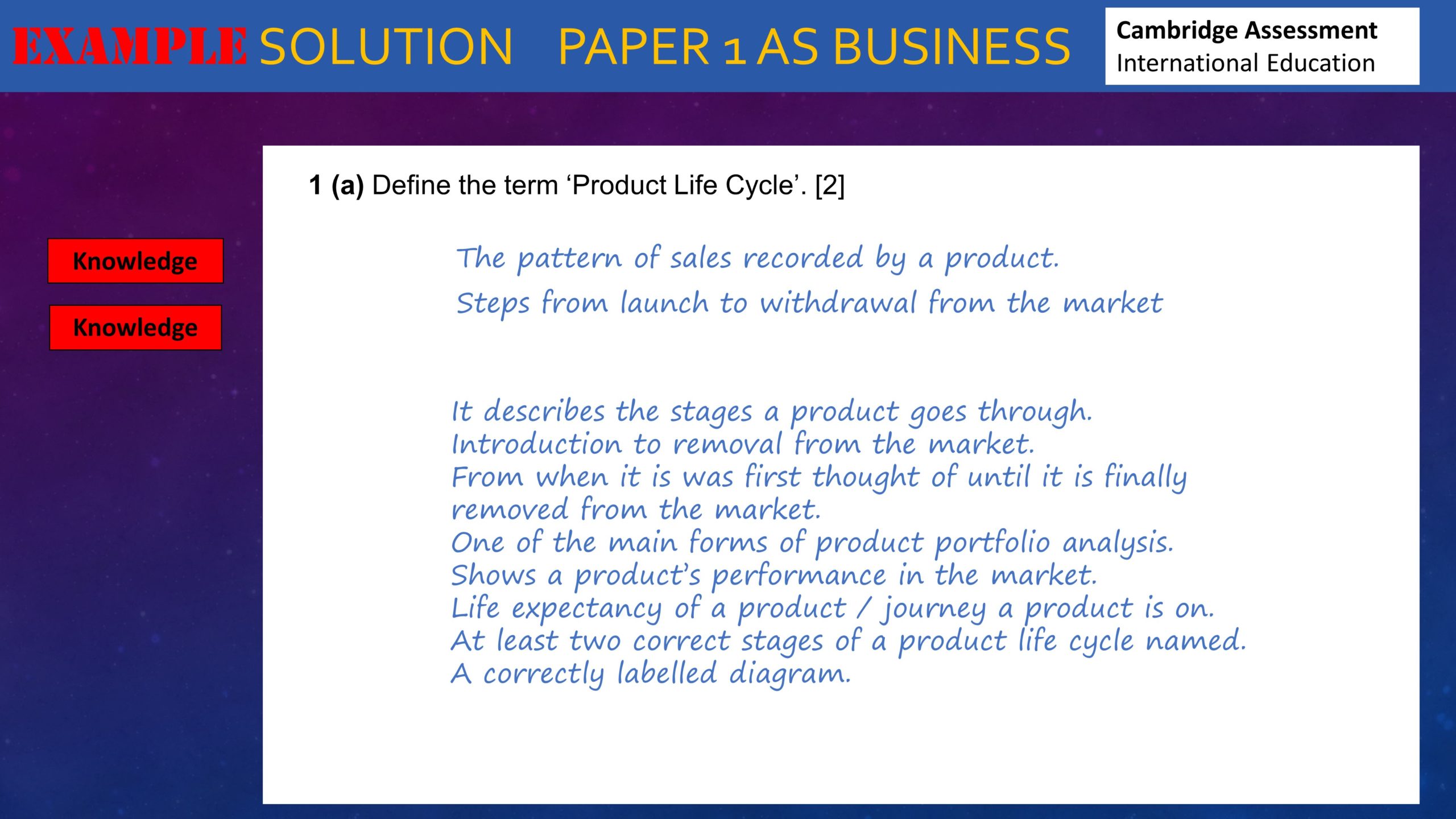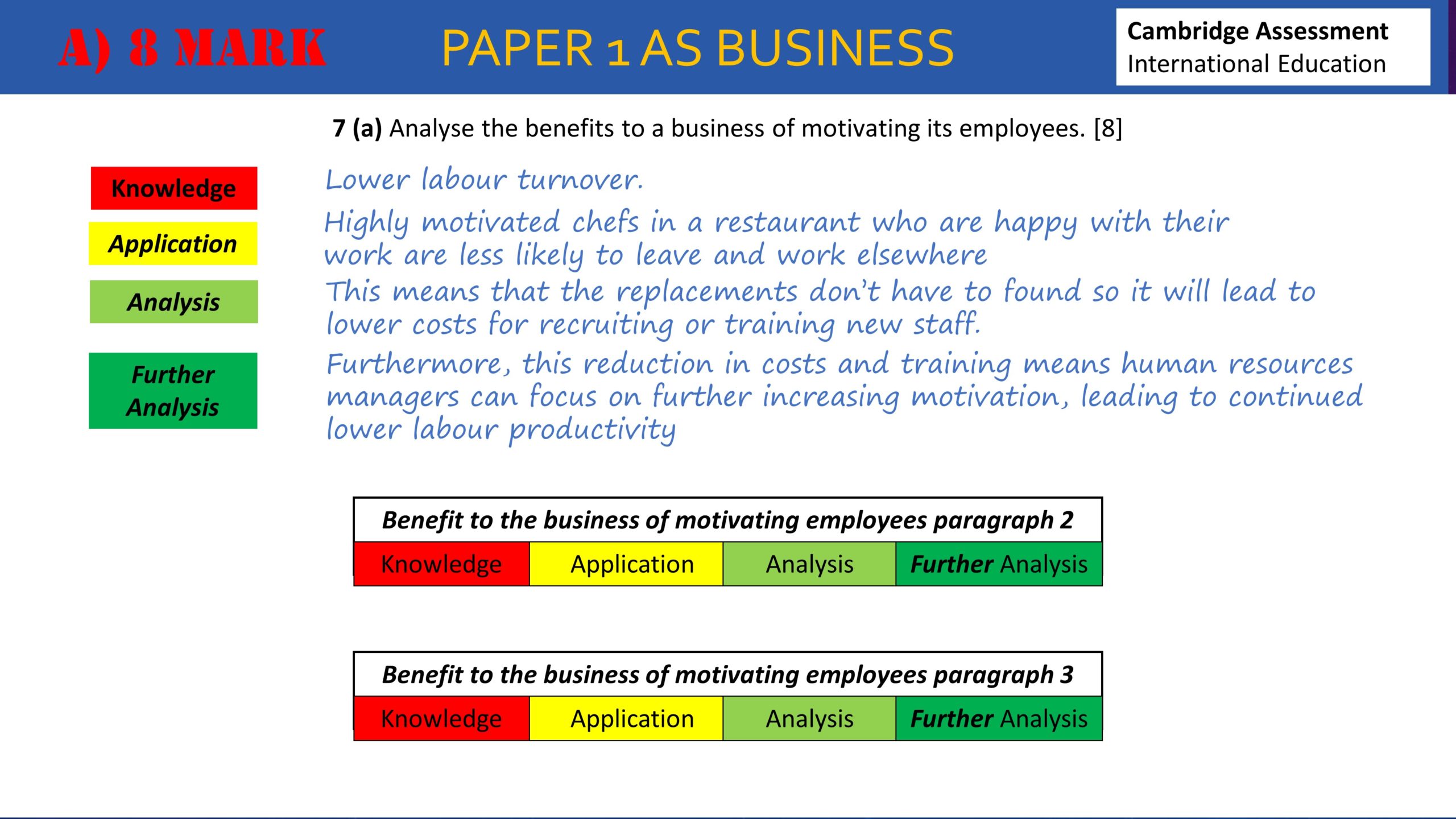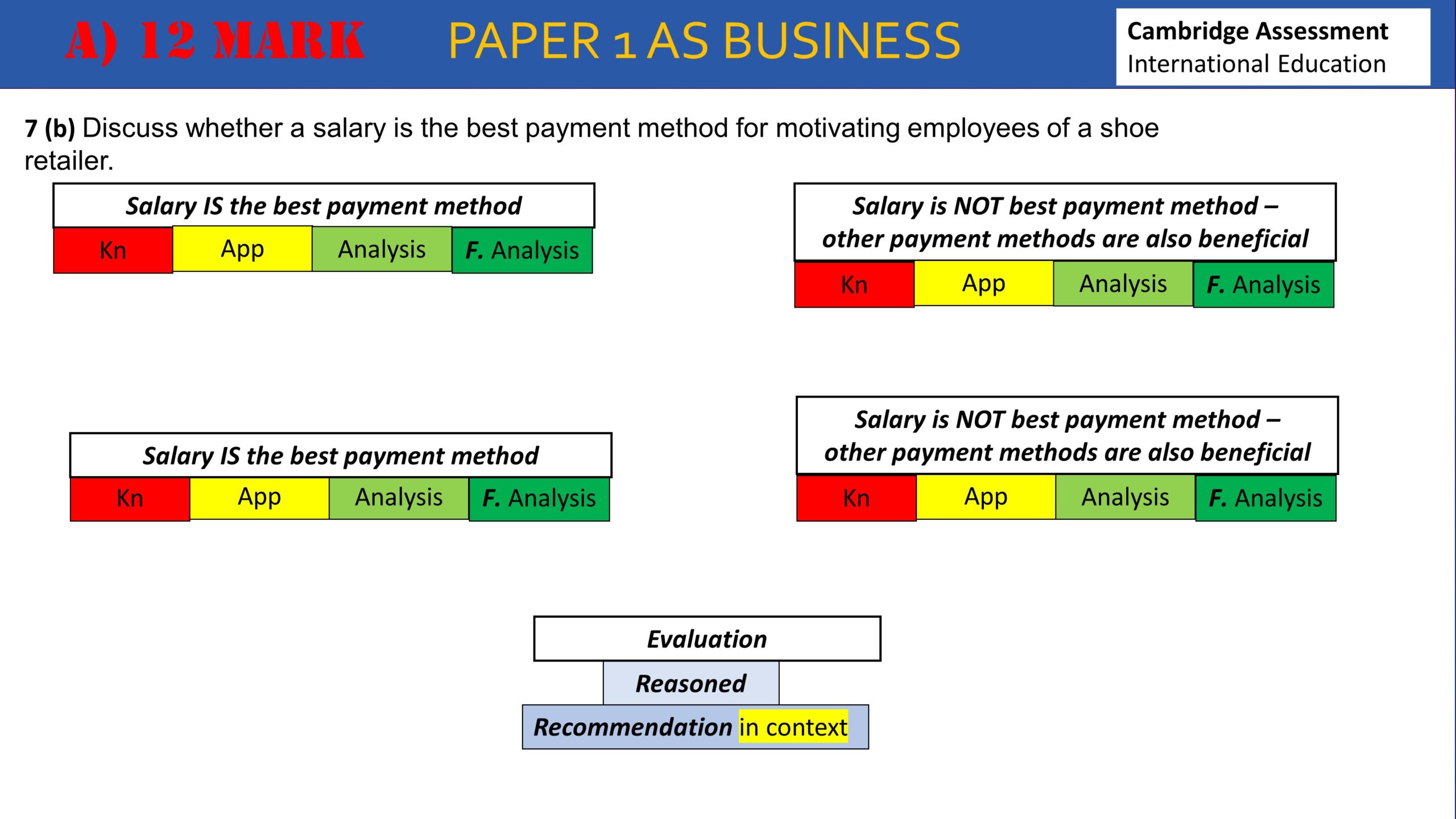Overview
This is your survival guide to AS Business Paper 1 (9609) to maximise your marks and achieve your full potential in Cambridge International Business A-level.
AS Business Paper 1 is the junior partner with only 40% of marks for your AS compared to senior partner Paper 2. But in many ways, it’s more challenging than Paper 2, as you must be strategic in your question choices and there is much longer essays so greater danger of going off in the wrong direction and losing marks.
Having marked 100s of AS Business exams, I have seen many higher ability students come unstuck by bad exam technique. But also students with more limited ability, achieve top grades because of smart exam strategy.
The good news is that paper 1 always has the same structure and types of questions. If you master the correct exam technique and prepare thoroughly you can walk into the exam confident and ready for anything the examiner with throw at you.
AS Business Paper 1 Survival Guide
Time needed: 1 hour.
Remember this is a quick, intensive guide. You can find the full past paper solutions on this link. For further exam technique and revision resources check out this link.
- Timing
You are advised to spend no more than 35 mins on the short answer questions in section A. So, that leaves 40 mins for the essay questions section B.
Relatively, that’s a lot of time. When you take out reading time, there is an equal amount of time for doing one essay question in section B of paper 1 as you get to get through all of the questions in one case study on paper 2.
However, time can still get away from you. So, stick to a maximum of two minutes per mark, and try and get through the short answer questions quickly so you’re not short of time in the section B essay questions.
- (a) 2 mark Short Answer Questions
Part (a ) questions are short definition questions. Here we can see an example for the product life cycle. We need two knowledge points to secure both marks.
I’ve gone for a pattern of sales and steps from launch to withdrawal but you could use any of these knowledge points.
The key is to have two clear different points to avoid repetition. It helps to have a definition for each key concept.
Go to this link to find flashcards for each of the keywords on the AS syllabus.
- (b) 3 mark Short Answer Questions
For B questions you need two sound explanations, in this case of how to extend the product life cycle. So, give your first point and then add a relevant example to show clear understanding and secure the points.
For our first clearly explained extension strategy we get two points, but to secure all 3 points we need another relevant knowledge point.
Again, make sure you avoid repetition and choose two points that are clearly different.
This combination of 2 and 3 mark questions is repeated 3 times, but you will also get one 5 mark knowledge question.
- 5 mark Short Answer Questions
In 5 mark questions, you usually have to explain the importance of a business concept, often in a specific context.
In this example, you need to explain how the better management of both trade payables AND trade receivables can improve cash flow.
In order to secure all 5 marks, you must effectively explain both factors. So we start by defining trade receivables and then explain how better management of trade receivables can lead to improved cash flow. Then trade payables, and then explain how better management of trade payables can lead to improved cash flow.
It’s important to stay focused on the question, so you can repeat the question stem, to make sure your answer precisely what the examiner what they are looking for, and you get all of the marks.
That is the short answer questions done, now it’s time for some exam strategy when choosing essay questions in section B.
- Section B Exam Strategy
In Section B you have a choice of three possible questions. Take your time, read ALL of the questions and both parts A) and B).
Don’t dive in without checking! If you don’t look part B might give you a nasty surprise.
You might be an expert on measuring business size, but have no clue about what an accountancy business is. I generally advise against 20 mark questions unless you are really confident writing long essays. It takes a lot of skill to write an extended essay and keep every paragraph focused on the question. You are also not diversifying the risk – putting all your eggs in one basket – to borrow the cliché.
I don’t know about you, but I have a short attention span. So unless the essay question is something you are really passionate about, it’s easier to go for the 2 part question option. Remember you are going to be writing this answer for 40 mins!
- 8 Mark Analysis Questions
Unlike paper 2 it’s not specified how many paragraphs you must complete. But from the exemplars provided by Cambridge we can see for A) part essay questions you should be aiming for 3 paragraphs with chains of analysis.
If you need to develop your chain of analysis skills, check out this blog.
Let’s look at an example of the benefits of motivating employees. Start with the knowledge point, then explain and apply it to the business.
Although it’s not strictly necessary as this question doesn’t mention a specific business, I like to put in an example as it shows the examiner your understanding and makes it easier to explain your point.
Finish by taking the analysis one step further.
Remember to include connectives – because, leads to, therefore, so that, as a result, consequently. It shows the examiner you are using analysis or taking analysis one step further.
No need for evaluation in this question – that’s coming up next in the b 12 mark question guide.
- 12 Mark Evaluation Questions
The D question is an analysis question plus evaluation.
Plan your answer before you begin. The question points you to including two points of view, so make sure you include both for a balanced answer.
Aim for two chains of analysis for and to against. It’s important to have balance, and show you understand both sides of the discussion.
In this question, we will aim for two points on why salary is the best payment method for motivating employees of a shoe retailer.
Then two reasons why a salary is may not be the most effective payment method for motivating employees of a shoe retailer.
Work through the chain of analysis in each paragraph.
To secure the evaluation marks you need a reasoned recommendation in context. Visit this link for a tutorial just on evaluation. Evaluation is the most challenging skill, so I won’t go into it too much detail here.
The key is to move beyond analysis and make substantiated judgments or recommendations. Remember to focus on the question to ensure that you answer in context, but you can also evaluate by explaining how your judgment will depend on other important factors.
In this example, I have evaluated by explaining the most important factor in motivating employees will depend on the individual, as all employees have individual needs.
Salary is important but must be part of a package of different financial rewards to ensure all employees are motivated and perform to their full potential.
Commons traps to avoid in evaluation are writing a summary of what you have written earlier in the essay, or basing your answer on opinions rather than reasoned argument or evidence.
- 20 Mark Question Tips
20 mark questions need an individual tutorial. Remember you are going to be writing this essay for 40 minutes!
But here are some quick tips:
1. Start with an introduction outlining the parameters of the essay.
2. Have paragraphs for each point building chains of analysis.
3. Make sure your answers are Balanced – arguments for and against.
4. Keep every paragraph focused on the question so refer back to the question in every paragraph.
5. Stick to the context of the question in this case a large furniture manufacturer.
6. Strong evaluation, in conclusion, reasoned recommendation in context for the business



